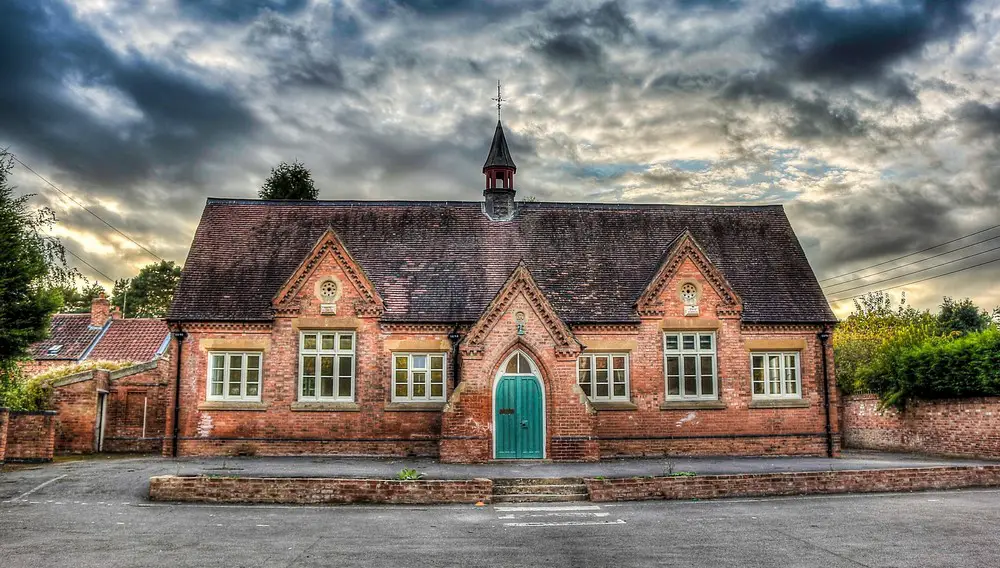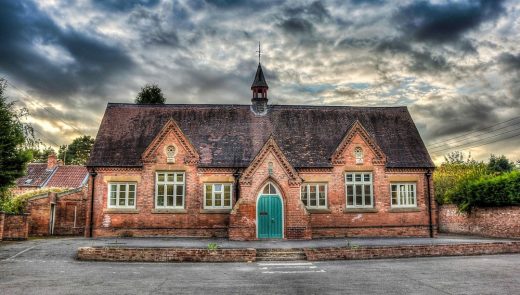Design elements that are making schools safer, New education architecture, Green building
6 Design Elements That Are Making Schools Safer
25 Feb 2023
Ensuring the safety of their students, staff, and properties is a priority for those in charge of managing schools and planning their design. Among the various threats schools are exposed to on a regular basis, we find theft, vandalism, data breaches, fires, and natural disasters.
Minimizing these risks allows schools to create a safe and comfortable environment in which students can focus on their studies and development while teachers and other staff members can enjoy a secure and pleasant workplace.
Let’s explore six crucial design elements that can make a school a safer and more productive environment for learners and workers alike.
Reinforced Doors and Windows
One of the most basic measures schools can adopt to boost safety is installing stronger doors and windows. These solutions can protect buildings more effectively from crimes and extreme weather conditions, such as floods and hurricanes, though having hurricane and flood insurance in place too is always advised.
Reinforced doors and windows are usually made of steel or aluminum frames and feature shatter-resistant glass. Their goal is to withstand any forced entry attempt by an intruder, while the glass is designed to be as resistant as possible against impact with heavy objects.
These doors and windows can also act as a crime deterrent. When ill-intentioned individuals notice that the school has installed these solutions, they are less likely to attempt a break-in.
Finally, reinforced doors and windows can help the school achieve significant savings by providing better insulation than traditional alternatives, which in turn helps the school cut utility costs.
Access Control Solutions
These systems allow school managers to prevent unauthorized individuals from entering the schools or specific parts of it while also better monitoring who is coming in and out of the building. Adopting these measures can significantly reduce the incidence of thefts and data breaches.
Access control solutions are also helpful for monitoring students within the school, as they can track when they enter or exit a classroom. This is particularly useful for ensuring they don’t wander off areas with restricted access and remain within the safe zones of the building.
Some of the most common types of access control measures for schools are electronic locks, identification cards, keypads, and biometrics systems.
Video Security Devices
A video security system is crucial for the security of any educational institution. These systems allow staff to monitor potential risks in real time by providing live video to security personnel or video analytics software.
Several types of surveillance cameras for business can be installed in a school. These range from basic devices to complex cameras with motion sensors and facial recognition technologies.
Video security systems can be installed both inside and outside of the buildings. Inside cameras should typically be located in areas where the students and staff gather, such as hallways or near entrances. Outside cameras can increase the security of doors, external playgrounds, parking lots, and other outdoor areas.
When implementing a video security system, it’s essential to consider privacy rules. Each state usually has specific regulations on where a school can place cameras and how they must be used. It’s also crucial to take steps aimed at ensuring that security footage is safely stored and only authorized staff can access it.
Fire Detection and Suppression Measures
Like any other building, schools are at risk of fires due to faulty electrical systems, chemical spills, improper storage of combustible materials, and other factors. Implementing a fire detection and suppression system is, therefore, crucial to ensure the safety of people and properties.
First, smoke detectors must be installed in any classroom, stairwell, hallway, and area where students, staff and visitors gather. It’s also necessary for each of these areas to feature easily accessible fire extinguishers.
Schools should also install fire sprinklers, which can be used to decrease the risk of fires spreading around the building. These systems detect fire heat and activate the sprinkler system, which stops them before they get out of control. These measures are crucial in large buildings with multiple floors.
Emergency Communication Systems
An Emergency Communication System (ECS) is a computer-based solution that supports communication during an emergency. It makes it possible to alert students and staff and give them specific behavior instructions during such an event.
ECS can also be coordinated with local emergency services and law enforcement agencies, thus allowing school managers to contact the relevant authorities immediately as soon as an emergency situation arises.
These systems must be properly integrated into the school’s infrastructure. For example, ensuring that a wireless network entirely covers the building allows alerts to be received even in remote areas.
Lighting
Proper lighting design can also contribute to boosting safety in a school. For example, it can ensure that emergency exits, corridors, and windows are visible during an emergency at any time of the day. Eliminating dark spots can also limit the risk of criminal activities and accidents.
A popular trend is to install LED lights, as they allow schools to increase energy efficiency and achieve cost savings. Furthermore, they produce less heat, allowing schools to control temperatures more effectively.
Comments on this Design Elements That Are Making Schools Safer article are welcome.
School Buildings
BDP Architects – school building designers
Architecture Design
Contemporary Building Designs – recent architectural selection from e-architect below:
Comments / photos for the 6 Design Elements That Are Making Schools Safer page welcome.






